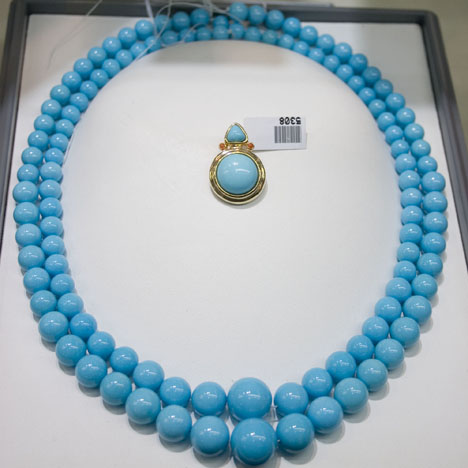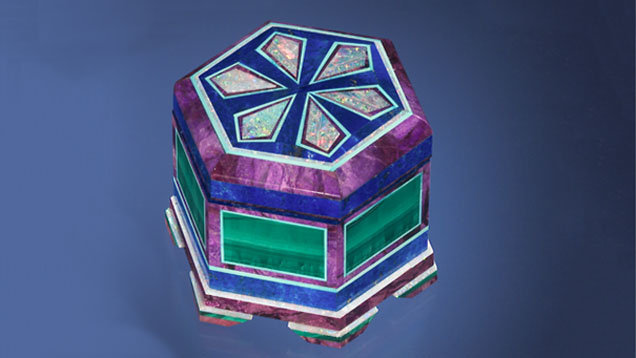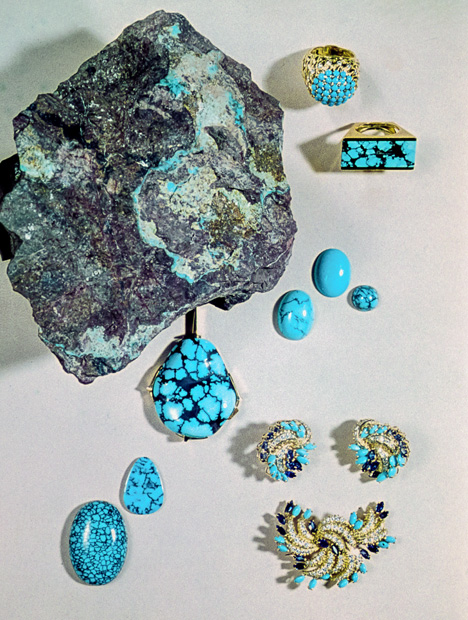Turquoise Quality Factors
Fine-quality turquoise is sought after around the world by designers of unusual jewelry pieces.
Typically, turquoise is judged on three basic quality factors—color, texture, and the presence or absence of matrix.
Turquoise Color
Blue Turquoise
The most-prized turquoise color is an even, intense, medium blue, sometimes referred to as robin’s egg blue or sky blue in the trade. The traditional source for this color is the Nishapur district of Iran, so you’ll also hear it described as “Persian blue,” whether or not it was actually mined in Iran.
Green Turquoise
Generally speaking, turquoise with a green to greenish blue color is less desirable than turquoise with a pure blue hue, but it depends on personal preference. There are some contemporary designers who actively seek avocado and lime green turquoise.

- Courtesy GLEAM
Turquoise Pattern
Turquoise can be semitranslucent to opaque, with a color that usually ranges from light to medium blue or greenish blue. It’s often mottled and sometimes has dark splotches. It might also have veins of matrix running through it (matrix is a remnant of its surrounding rock). The material known as spiderweb turquoise contains fine seams of matrix that form attractive web-like patterns.
The most valuable turquoise is an even medium blue, with no matrix and the ability to take a good polish.
Turquoise Cut
Turquoise is most often cut as a cabochon. The smoothly rounded dome shape sets off turquoise’s color, texture, and any matrix beautifully. In addition, manufacturers and artisans fashion turquoise into round or oblong beads for strand necklaces, and into small, flat pieces that are popular in jewelry inlays. Some top-color blue turquoise is engraved with Persian or Arabic inscriptions, inlaid with gold. Lower-quality rough material might be tumbled into “nuggets."

Turquoise Carat Weight
Turquoise is weighed in carats, and five carats equal one gram. Turquoise is available in a wide range of sizes. All sizes, even very small stones, are used in Native American jewelry, and large pieces of turquoise rough are popular for carvings. For any size, the quality and evenness of the color is the overriding value factor.

.jpg)


